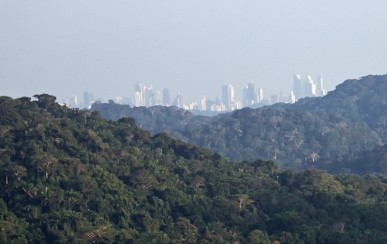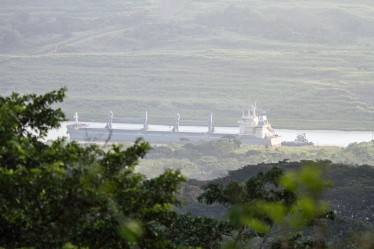Canopy Tower, Panama
The Canopy Tower, located inside Soberanía National Park, just north of Panama City, started its history as an US Air Force radar station. In 1999 it opened up as an eco lodge. Being a tower on the top of a hill, the view is obviously very good and the canopy's inhabitants are at your feet, literally.
We arrived in Panama after two weeks of mountaineering in Chile, and had a week's worth of recovery birding planned in Panama. We decided to split our time with four nights at the tower and three nights at the Canopy Lodge. A driver picked us up at the airport and drove us directly to the tower in about an hour. We arrived just before lunch time. Perfect. This was early December which is the beginning of the dry season in Panama, but still low season when it comes to birding (not that we noticed any "low" in that respect). We had the Blue Cotinga suite, a spacious room with its own balcony and hammock. The tower is built from steel and can be quite noisy at times, but its primary feature, the large rooftop observation deck is well worth the visit. Both Panama City and the canal is visible from the deck. But it is the birds that most visitors come for, and they are right at your feet.
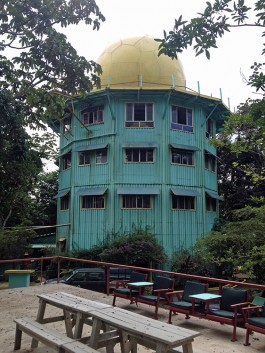
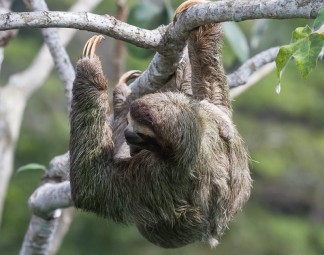
There are feeders for hummingbirds around the entrance, and the White-necked Jacobins will zip right in front of your nose at incredible speed. The feeders had constant activity, with the Jacobins being fiercely territorial. The Blue-chested Hummingbird and Long-billed Hermit were also frequent visitors. It can be challenging to photograph these birds, but with a little patience the hummingbirds will reveal their favorite perching place, usually very close to the feeder.
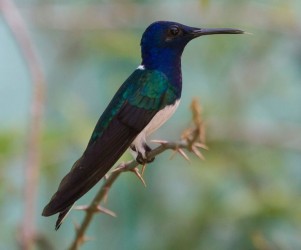
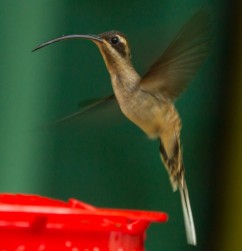
There are usually two activities per day, one before and one after lunch. Sometimes there are full day excursions with lunch in the open, but we had only half day trips. Which was rather nice, since you get to rest a few hours in the middle of the day when bird activity is low. Breakfast was normally around 7:30am, and that left a little time before breakfast to spend on the observation deck at sunset. Trips started around 8:15am to 8:30am, except for the trip to Pipeline road which started 7:30am. Lunch was served at 12:30, and afternoon trips started around 3pm. Dinner was served 7pm. That adds up to 4-5hours of birding in the morning and 3-4hours in the afternoon. Plenty!
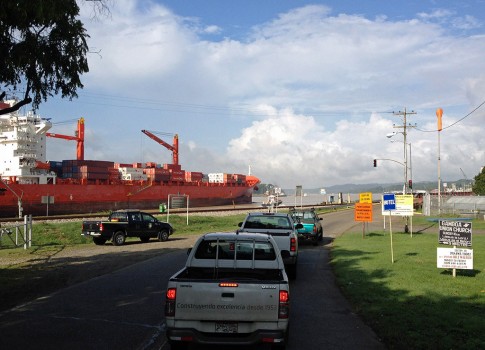
Most trips involve driving a short distance with car (bird-cage) to a nearby location. The closest locations are in and around the Summit Gardens. These are open areas with good light and visibility. Then there is the area around the small town of Gamboa, which is located right by the canal. Driving to Gamboa involves crossing a very old, single lane bridge across a side river of the canal. There are several nice and open areas in that area. The farthest location we visited was the Pipeline road, which is north-west of Gamboa. It is a very long road along an old oil pipeline engineered by the Americans. It was actually never put into active use. The Pipeline road is surrounded by thick forest and is quite dark, so difficult for photography, but it is the location with best opportunity to see rare species.
The Tower was only half full during our stay, so we had quite flexible options. Here is the itinerary we followed during our stay at the Canopy Tower.
Day 1.
We arrived for lunch from the airport. After lunch we (the two of us plus a guide) headed to the Summit ponds, which is right next door. There are two ponds there and a forest path. The ponds hold various herons and kingfishers. On the forest trail we had a Golden-collared Manakin posing nicely on a branch. There was also a Common Pauraque which refused to be photographed, in addition to various flycatchers, tanagers etc. A few nice butterflies too!
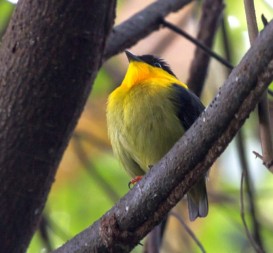
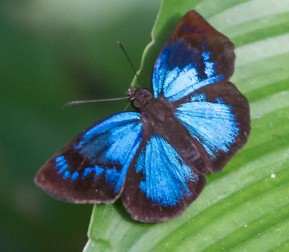
Day 2.
The morning session took us to the Pipeline road. Another group from the Tower also went there on a full day trip. Given my primary interest in photography, the half day option suited us well. The morning started rather quiet, but we did see a Bat Falcon on the way while driving, even stopped for a photo. There were a few antbirds around, but they are really difficult to photograph. We did however see a troop of army ants crossing the road. First come all the insects and spiders that try to escape the ants, then comes a carpet of ants! We saw both Keel-billed and Black-mandibled Toucans high up in the trees. The best bird of the Pipeline road was the Speckled Mourner. Then in a hole in a dead tree we had a Panamanian Night Monkey peek out - very cool! It will probably use that tree for day rest for several months to come. A Great Tinamou was crossing the road almost between the legs of another group on the road.
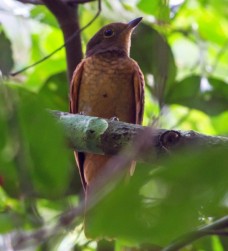
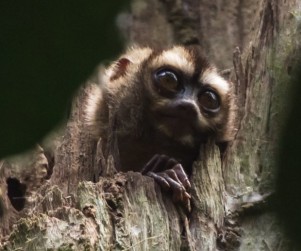
After lunch we headed for Gamboa marina. A very local and heavy rain shower hit us on our way. Thankfully we had a closed car that day! The marina was totally dry though. There is an open view across the waters and reed beds. An Osprey was patrolling above us, and flocks of Mangrove Swallows were resting on the boats. A Lesser Nighthawk was sitting in a tree in the marina. Wattled Jacanas were doing their thing along the waterfront. There were quite a few flycatchers, warblers and tanagers too.
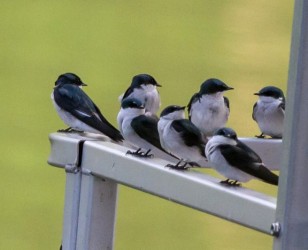
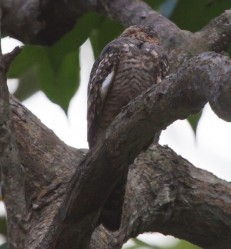
Day 3.
This turned out to be a very busy day, with 89 species ticked off. It started in the morning with a walk down Semaphore Hill road from the Tower. Well, we did not even get out of the gate to start down the road when a mixed flock of bird flew in towards the Tower. That triggered an almost two hour long spotting and photography frenzy right at the base of the Tower. Black-breasted and White-whiskered Puffbirds, Brown-hooded and Red-lored Parrots, six types of antbirds, three types of Woodcreepers, nine types of flycatchers, three types of Vireos, warblers and tanagers... and Clay-colored Thrush.
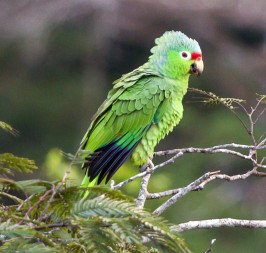
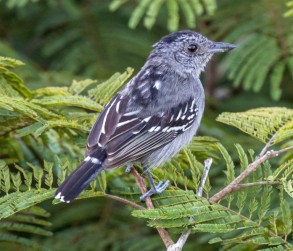
After lunch we headed to Summit Gardens. This is a park and zoo, and has some nice open areas with good spotting opportunities. We did not pay attention to the caged birds, except for the Harpy Eagle, which was a really interesting encounter. A Crane Hawk was posing very well for us. We saw all three Honeycreepers, Scarlet and Yellow-rumped Cacique, lots of Tanagers and flycatchers, Orange-chinned Parakeets, a Whooping Motmot and more. Oh, and Clay-colored Thrush.
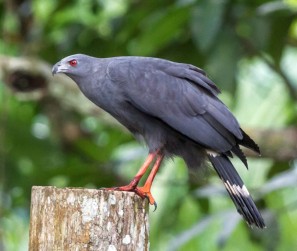
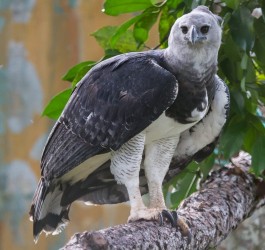
Day 4.
The morning session was a trip to Gamboa Resort. This was previously a golf course; an open area with good visibility. Many nice birds here: Slaty-tailed and Gartered Trogon, Squirrel Cuckoo, Toucans, Brown-capped and Southern Beardless Tyrannulets, Manakins, Greenlets, Wrens, 8 different Tanagers, Euphonias and the list goes on. The highlight of this morning was the Great Antshrike which showed very well and close enough to get nice photographs.
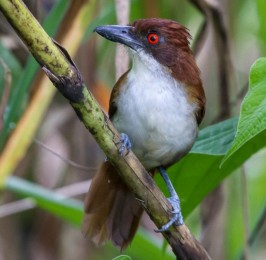
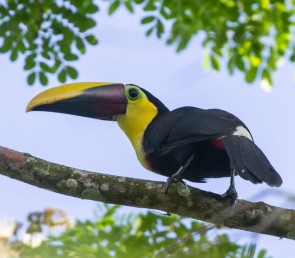
In the afternoon we went to the Ammo Ponds, which is right outside Gamboa. The ponds are just that, small ponds, with some forest paths around. The ponds held Rufescent Tiger-heron, Great Egret, Little Blue and Striated Herons. There were lots of Wattled Jacanas, some with chickens and Purple Gallinule. Most exciting were a few White-throated Crakes that could be teased out from the reeds. One showed pretty well, but not in perfect sight for photography. Other than that there were the usual suspects among tanagers and flycatchers.
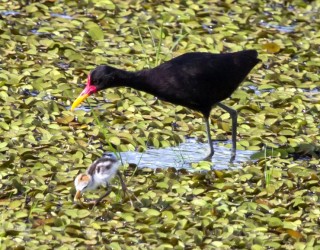
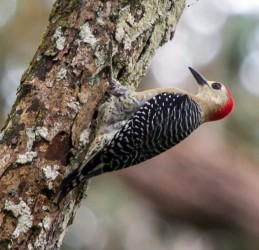
Day 5.
The fifth day was our transfer day to Canopy Lodge. After breakfast we has a few hours at the Tower before a driver picked us up at 10am. The drive to Canopy Lodge is about 2.5hours, and that would have us arrive just in time for lunch there.
Summary
The stay at the tower was very rewarding. We checked off 145 species during our stay, plus 9 different mammals. The guides were generally very good and knowledgeable.
